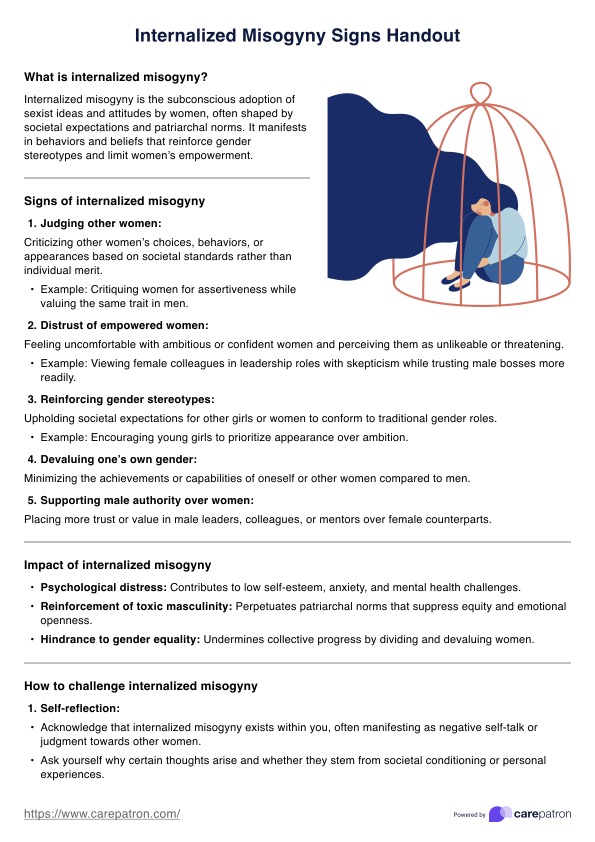It appears as self-doubt, judging other women, trusting male authority over female peers, and reinforcing gender stereotypes.

Internalized Misogyny Signs Handout
Understand internalized misogyny, its signs, and impact on women's mental health. Equip yourself with a free Internalized Misogyny Signs Handout.
Use Template
Internalized Misogyny Signs Handout Template
Commonly asked questions
Dismissing women’s emotions, questioning their competence, manipulating them into doubting their reality, and trivializing their concerns.
A male chauvinist believes in male superiority and prioritizes men’s needs, while a misogynist harbors disdain or hatred toward women. However, "chauvinist" has fallen out of colloquial use since it can be applied to any form of extremely aggressive advocacy of any belief.
EHR and practice management software
Get started for free
*No credit card required
Free
$0/usd
Unlimited clients
Telehealth
1GB of storage
Client portal text
Automated billing and online payments











